Last week we focused on Colin Crabbe’s youth up to the time he enlisted in the Scots Guards. After his stint in the service, he found his calling, establishing a classic car business, and almost immediately began to find treasures around the world. Finding, restoring and racing a Mercedes-Benz W125 Grand Prix car was everyone’s dream, but only someone like Colin Crabbe could make it come true. But first a trip to Italy where he finds the 1938 Alfa 2.9 Touring Le Mans coupe…
Establishing Antique Automobiles
My resignation from the Scots Guards came through officially in July 1964. I set up a small garage business north of London that would specialise in the restoration and sale of vintage cars. It was important that we got cracking with this idea as soon as possible and find suitable premises before my departure. We soon found an old Methodist chapel in the village of Baston just north of Peterborough in South Lincolnshire, close to the beautiful mediaeval town of Stamford.
We set about running Antique Automobiles, and we became a Limited Company in 1966. Those early carefree days were great fun and we bought and sold a large number of old motor vehicles, many requiring simple repairs or a little upholstery work. Most of them would be left parked outside the chapel as we had no showroom. I was pleased to discover that the BRM team was close by in the town of Bourne and they were to prove a wonderful source of mechanics/technicians over the next twenty years or so. Good workmen and craftsmen were essential as the cars would often arrive on the back of lorries, dismantled, incomplete and in horrible condition.
Alfa 2.9 Touring Le Mans
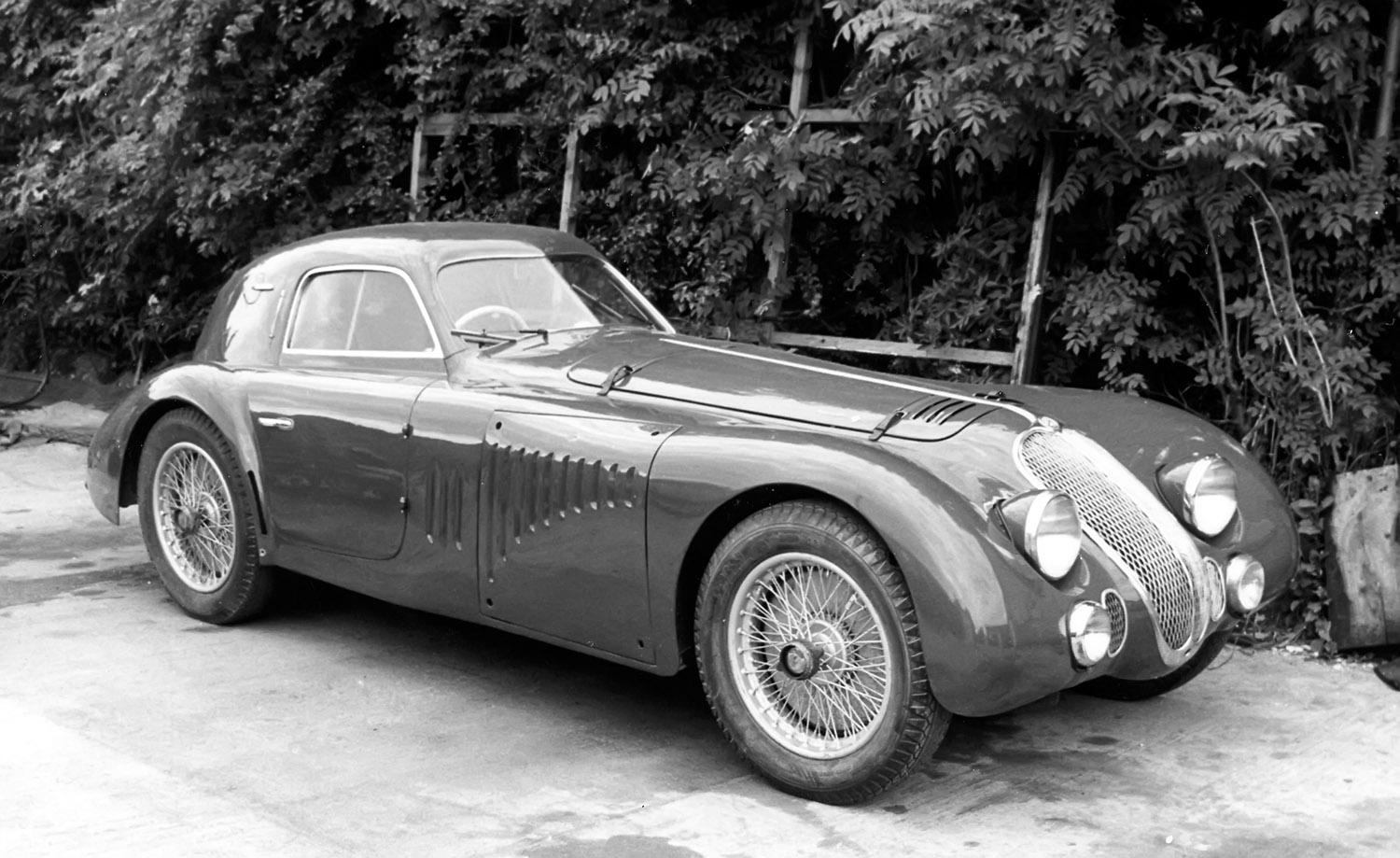
Alfa Romeo 8C 2.9 Touring Coupe built for the 1938 Le Mans enduro. For the full story on this, click on photo.
In the late 1960s, I was invited to Italy to stay with Johnny Lurani, a well-known pre-war racing driver, to inspect his beautiful Alfa Romeo 8C 2.9 Coupe which he wanted to sell to me through his friend Cupellini. This 2.9 had been specially designed to win the 24-hour race at Le Mans and was fitted with an elegant streamlined body by Touring. He assured me the car had been 100% mechanically restored and it certainly looked spectacular on the outside; even the original pre-war scrutineers’ badges were still affixed to the steering column. The deal was done, I had fallen in love with the Alfa and a few days later and £5,000 poorer the car was driven towards the autostrada with the driver’s seat packed beside me as I had some difficulty fitting in the cockpit. The engine died terminally on arrival at the first toll booth so that was the end of the trip and a month later we returned to tow it back to England with a transit van.
Italy was an exciting place in those carefree days and I was to make many friends including the great Alfa Romeo archivist Luigi Fusi. I was greatly honoured when Johnny Lurani asked me to sign a wall in his garage with many famous pre- and post-war drivers’ signatures. This remarkable tableau must still exist.
The car was sold to Douglas Murray, Lord Doune, who kept it for many years but it eventually found its way into Mike Poberesky’s collection at Cap d’Antibes. I never really appreciated the importance of the car and Mike was to later exchange it with the Alfa Romeo company for a Grand Prix Type 158, a racing car comparable I think to my Mercedes W125 with a quite fabulous exhaust scream. The 158 is the only such racing car in captivity today, as the Alfa Romeo policy was never to sell one.
Mercedes-Benz W125
My most important motoring find has to be the W125 Silver Arrow discovered lurking in Leipzig in East Germany. In April 1968, my father and I were staying at the Muthaiga Club in Nairobi when a German friend cabled me to say that he had found a Grand Prix Mercedes of some type hidden on the East German/Polish border, and would Antique Automobiles be interested? I could think of nothing better, having dreamed of such a discovery for years. What a project it was but there was also the small problem of raising the $10,000, an enormous sum in those days, and it was all a bit of a gamble. My middle-man was a Dr. Muller, an old and trusted German friend, otherwise I would never have been bold enough to have gone ahead with such a transaction.
It was quite frightening crossing into the German Democratic Republic, but nothing could have been easier. With a briefcase stuffed with dollar bills, this was the first time I had to cross the infamous Checkpoint Charlie.
The Mercedes had been hidden in Leipzig during the War and had been ‘discovered’ by a small film company. They had wanted the car to be drivable but, finding it impossible to use the original engine, a 1500cc VW unit was to be substituted. As luck would have it the car was remarkably complete with the original engine packed in a box.
It was quite frightening crossing into the German Democratic Republic, but nothing could have been easier. With a briefcase stuffed with dollar bills, this was the first time I had to cross the infamous Checkpoint Charlie. In fact, we were never to encounter a problem with the various Communist regimes. Play it straight and you do not get into trouble. My prey, a tatty and totally real 1937 Grand Prix Mercedes was awaiting under a tarpaulin. It had even been repainted rather badly in silver. My absolute dream racing car and what a restoration project for our team at Antique Automobiles.
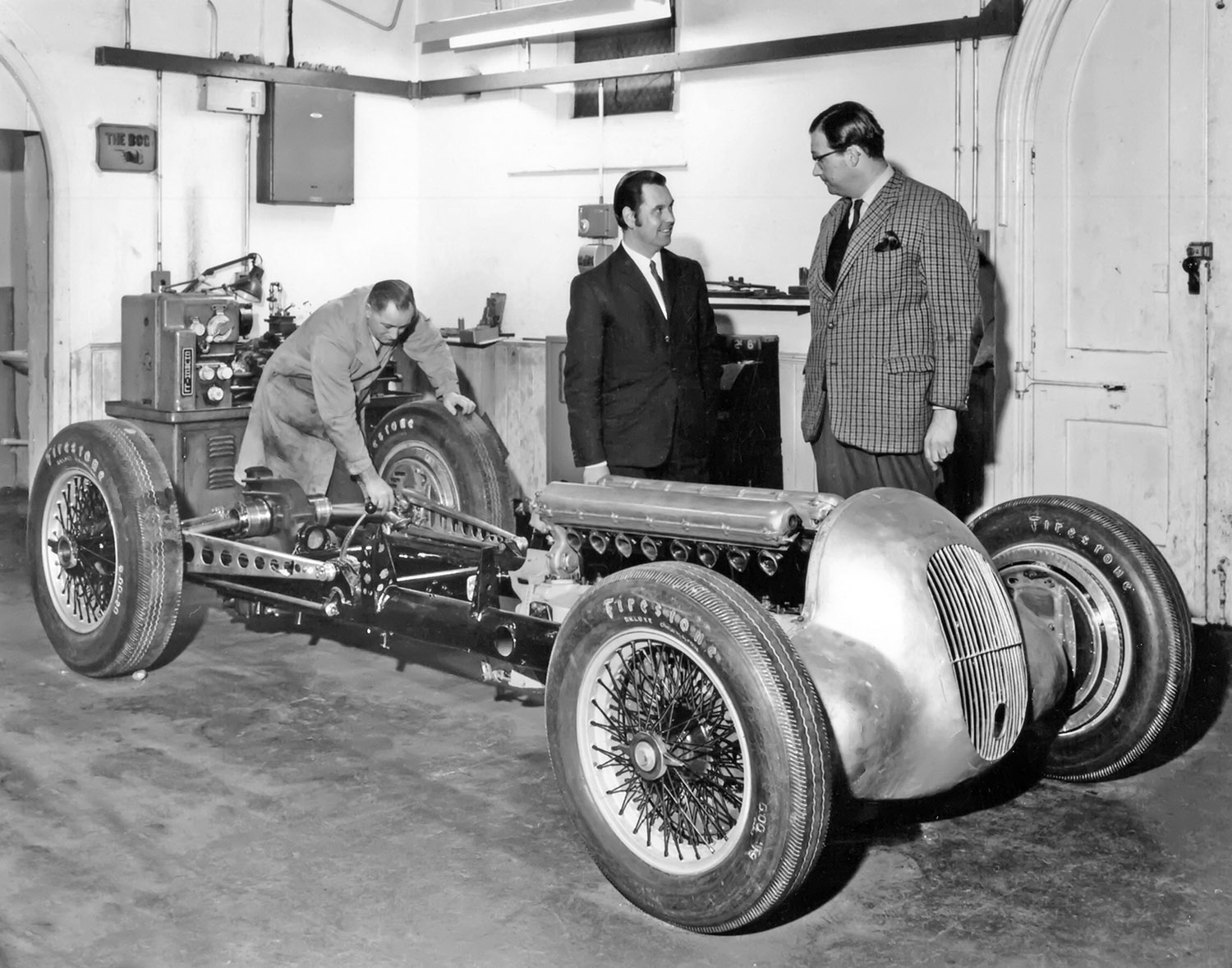
The W125 in the workshop at Baston in 1969. It needed tires and brakes which were obtained from a W154.
The W125 arrived back at Baston with much fanfare and a fair amount of interest from the motoring press but not a squeak from Mercedes-Benz. They were so blinkered believing it impossible that I could own such a car. My requests for assistance during the rebuild were answered simply that as the allies had destroyed all the relevant plans they were unable to help and we desperately needed the blueprints for rebuilding the supercharger but it was not to be. That same year during the Italian Grand Prix at Monza when lunching with Goodyear, Leo Mehl introduced me to a remarkably unpleasant man who was one of the infamous Schlumpf brothers. When Leo told him that I owned a Grand Prix Mercedes he looked up and said, ‘so what, I have two in my collection at Molsheim’. I was not amused but it was a fact that the Schlumpf collection did contain a W125 discovered somewhere in the Eastern Bloc and then more recently a post-war W154 had been loaned to the collection by Mercedes-Benz.
It was lucky that we had several fine men from the BRM organisation and then I was lucky to buy a rolling W154 chassis, less engine, in California through an old friend, Dick Merritt. This was the Romanian car (chassis no. 9) sold by Reg Parnell to Willett Brown for Don Lee’s Team to enter the 1947 Indianapolis 500. The sales invoice still hangs on my office wall showing that I paid £3,645 for a Mercedes W154.
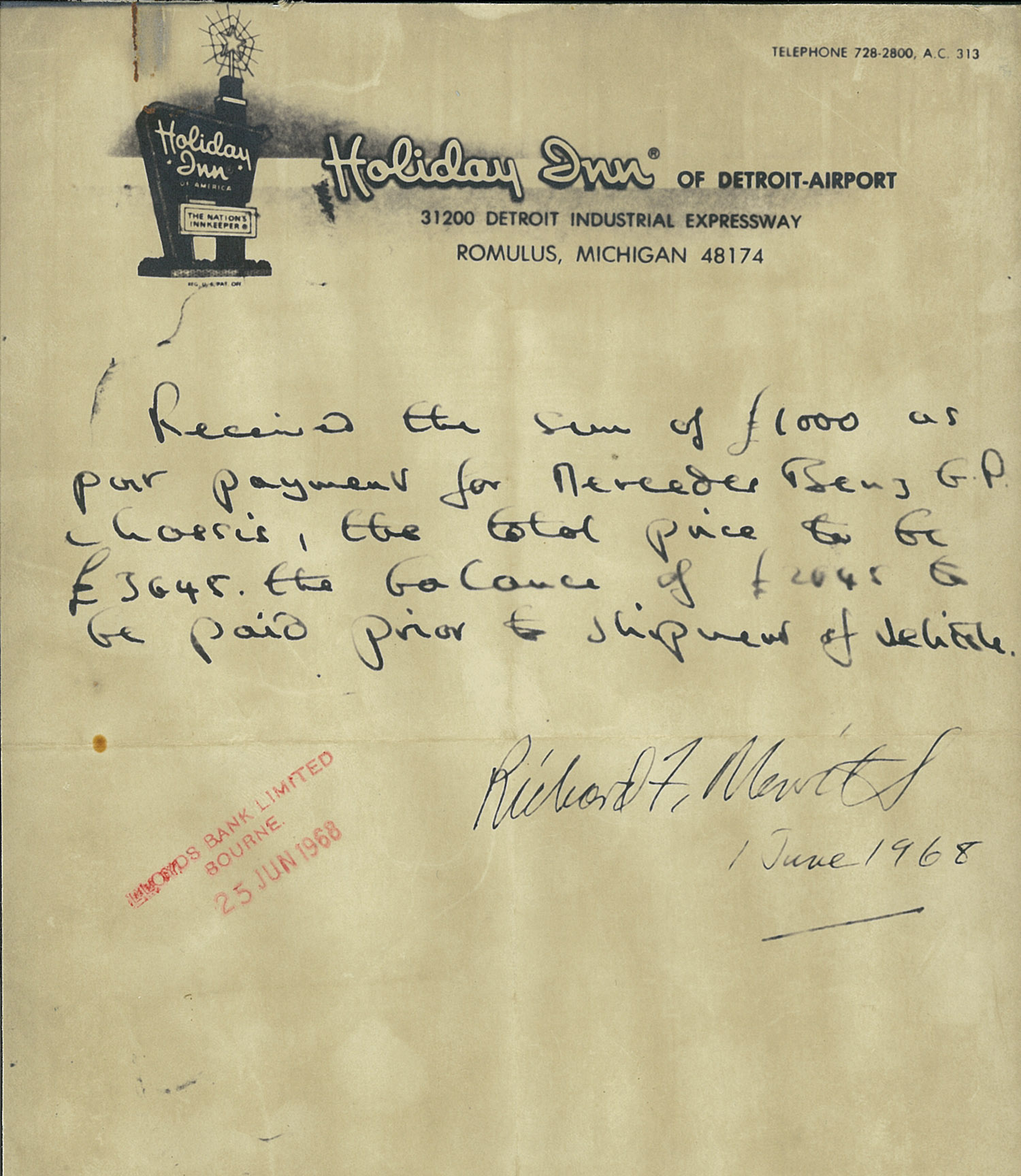
The sales invoice still hangs on my office wall showing that I paid 3,645 pounds for a Mercedes W154. (For more about Dick Merritt click on photo)
On a cold but dry day the W 125 was attached by a length of rope to the rear of the Transit van and we set off down the Fen, towing it in gear so as to get the oil circulating. Eventually the engine fired up on all 8 cylinders and practically took off, just missing the van by a hairsbreadth, and luckily avoided going into the ditch. The rope broke and the car hurtled out of control towards Spalding. I must have had the biggest grin ever when the mechanics finally caught up.
The W125’s first outing was a demonstration at the British Grand Prix and it ran flawlessly although a little hairy to drive on the hard semi-fossilised 25-year-old Indy tyres. I wore a period red cloth helmet and a matching sleeveless shirt. The handling was remarkably good and similar to my Maserati 250F but the big difference was the enormous power. I was one happy guy! In 1969 I reduced the Silverstone Vintage club circuit record by 6 seconds in the W125. It was bloody quick…also unbeaten while I owned it. Neil Corner spun the car in the tunnel at Monaco! A big fright, c’est tout.
Neil Corner then wanted to buy the car but nothing at the time was going to tempt me. I do not think I was ever beaten that season and the car continued to be reliable.
But after two of the best years’ motor sport ever with the Mercedes, it was decided the time had come to change direction. There was also the unpleasant thought that the engine, already somewhat fragile due to its incarceration in the East, might blow up and there was no way I could afford to repair this. My old mate Neil had lusted after the Mercedes ever since I had thrashed him the previous year, so I decided to sell it to him. Dick Crosthwaite rebuilt the W125 engine for him and Mercedes let him have the supercharger plans so it was then up to its near original power output of well over 500 bhp. Neil only competed once in the W125 at the historic Monaco race.
The W125 was sold to the Hayashi Collection in Tokyo and in the late 1990s Bernie Ecclestone bought it to star in his collection of racing cars but surprisingly he has now sold it to a German collector who assures me that we shall see and hear the Mercedes once again.
D Type Auto Union
I suppose that if a Grand Prix Mercedes is not available, an Auto Union would be a reasonable substitute. During the late 1970s, my German friend Hubertus von Dönhoff was instrumental in extricating a 1938 Auto Union D-Type from Czechoslovakia. This was clever knowing only too well that taking anything from behind the Iron Curtain could be somewhat difficult and possibly dangerous. Von Dönhoff was persuaded to sell the car and we offered it to Kerry Payne, and we met under the station clock in Munich at exactly 12.05 hours. I mention this as everything Kerry did was a little similar to a spy thriller and while such a thing might happen behind the Iron Curtain it was not normal in Bavaria. The Auto Union was then transported to Hamburg to take the Harwich ferry. I was a little apprehensive exporting the car from Germany as it was unique and perhaps of great national interest. Needless to say, no one cared and two days later the Auto Union arrived at my Antique Automobiles workshops.
…we were to get a big surprise when taking the engine and gearbox to pieces as they were found to be entirely empty of any internal mechanical parts.
The car’s arrival caused a great deal of excitement in the world’s motoring press and we were to get some excellent publicity. The Auto Union was externally incredibly original and complete even to the tyres and paintwork. However, we were to get a big surprise when taking the engine and gearbox to pieces as they were found to be entirely empty of any internal mechanical parts. It was merely a ‘Show’ car and had been sent to Prague for exhibition in 1939. Christian Philippsen, a Belgian friend, and I went to look for Auto Union parts in East Germany, finding several pieces including a fuel pump, but no engine or gearbox. We then had an extraordinary stroke of luck as Martin Schroeder, the German racing car historian, located a V12 supercharged engine in a technical museum somewhere in East Germany.
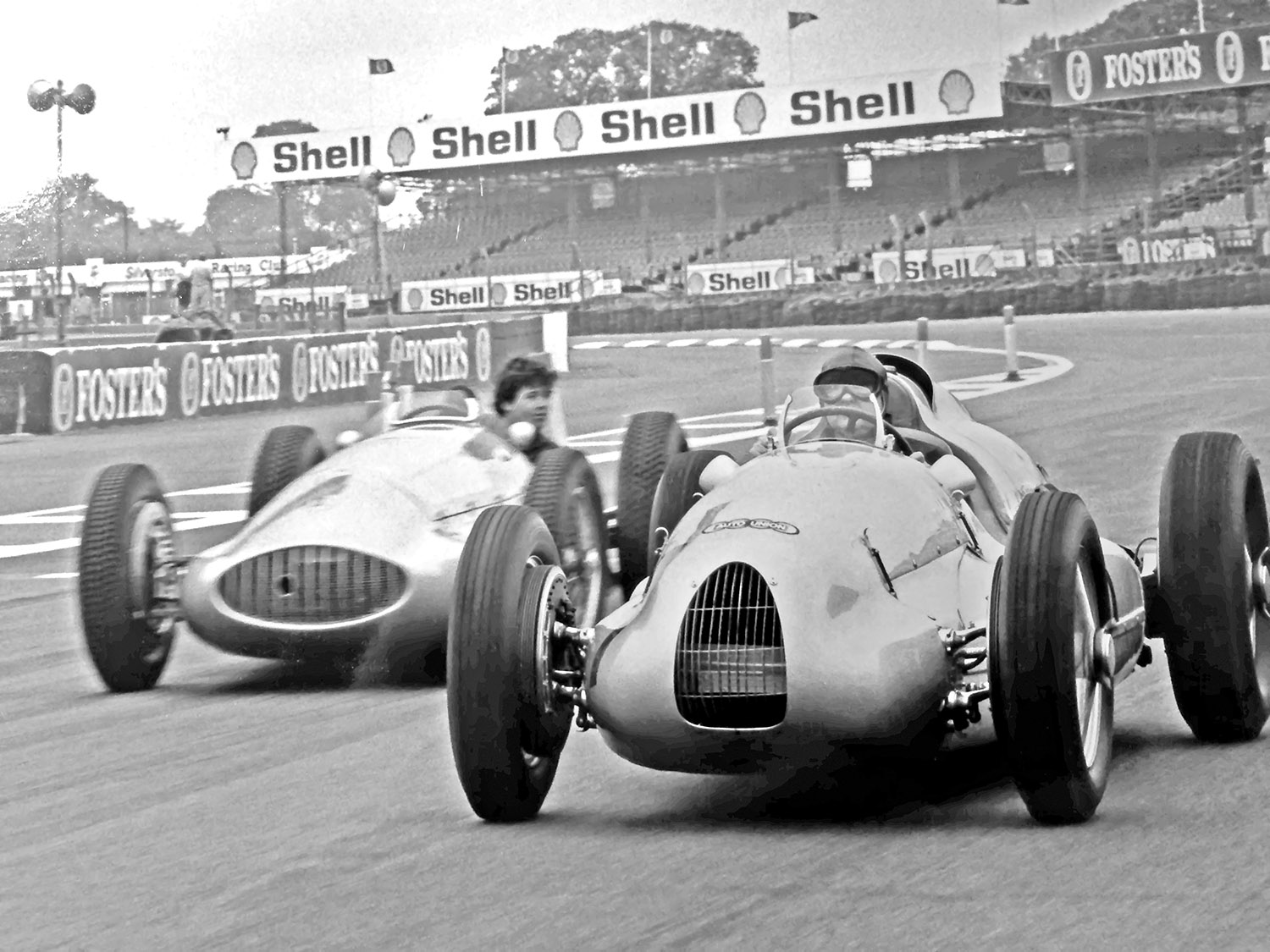
Son Alastair, age 15, sits in the W154 while Neil Corner awaits the starter’s flag in the D Type Auto Union at Silverstone in 1989. Both cars had been discovered by me years earlier! On a further note, I am proud to be a 50-year (life) Member of the BRDC (British Racing Drivers’ Club).
At the Oldtimer Grand Prix at the Nürburgring on the 14th August 1979 I demonstrated the Auto Union on a wet track in front of an enormous crowd. This was the fortieth anniversary of a similar car driven by Muller coming second in the 1939 German Grand Prix. The car was most exciting to drive at speed, virtually brakeless and untested. The noise of the engine was so shrill that those watching above the pits fled with ears covered.
Next week: Fantastic finds in Brazil, and the answer to “Car 54 Where are You?”
Book Specifications:
• Page Size: 230mm x 280mm
• Page Count: 448 pages
• Photographs: 550 images
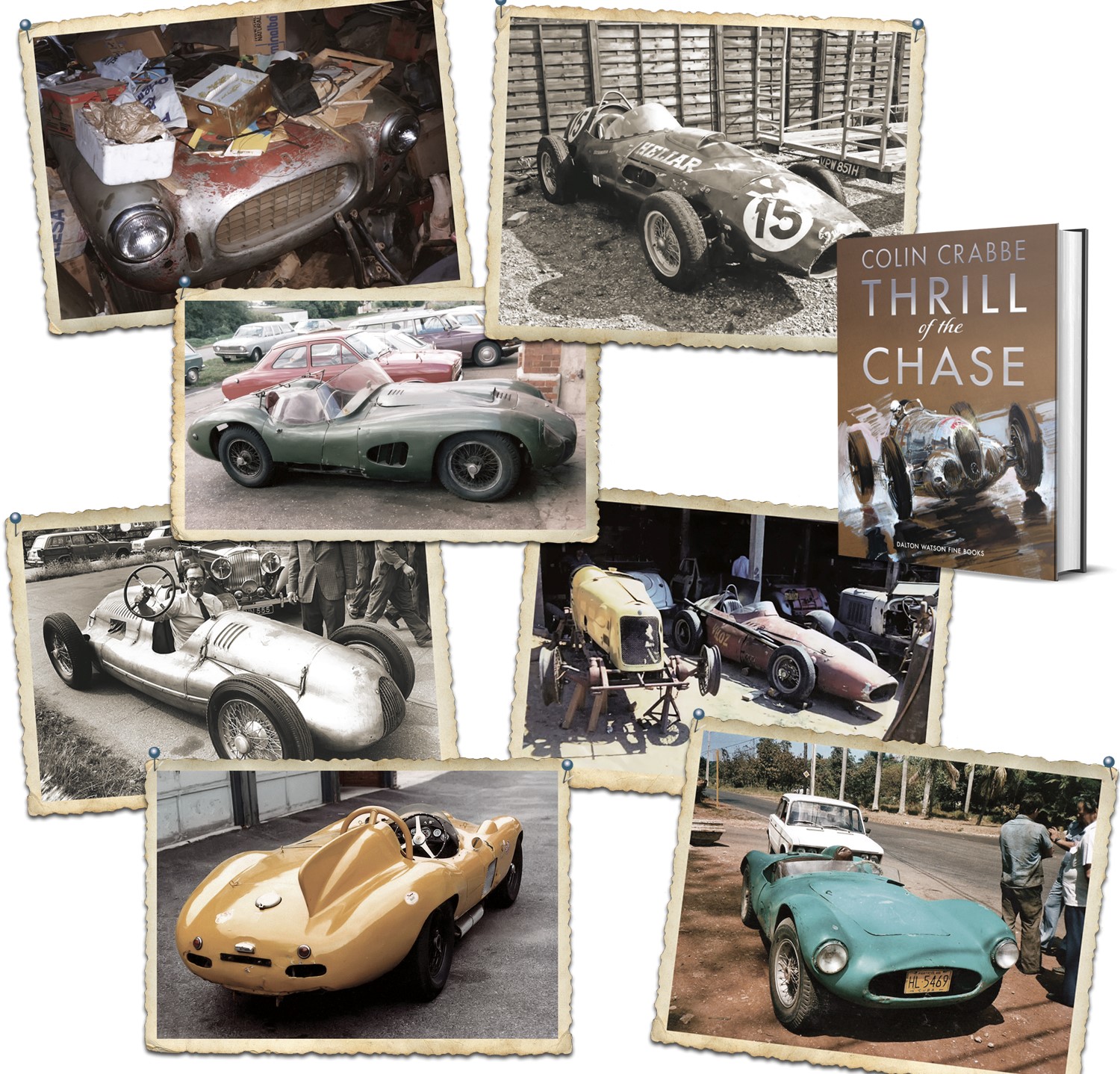
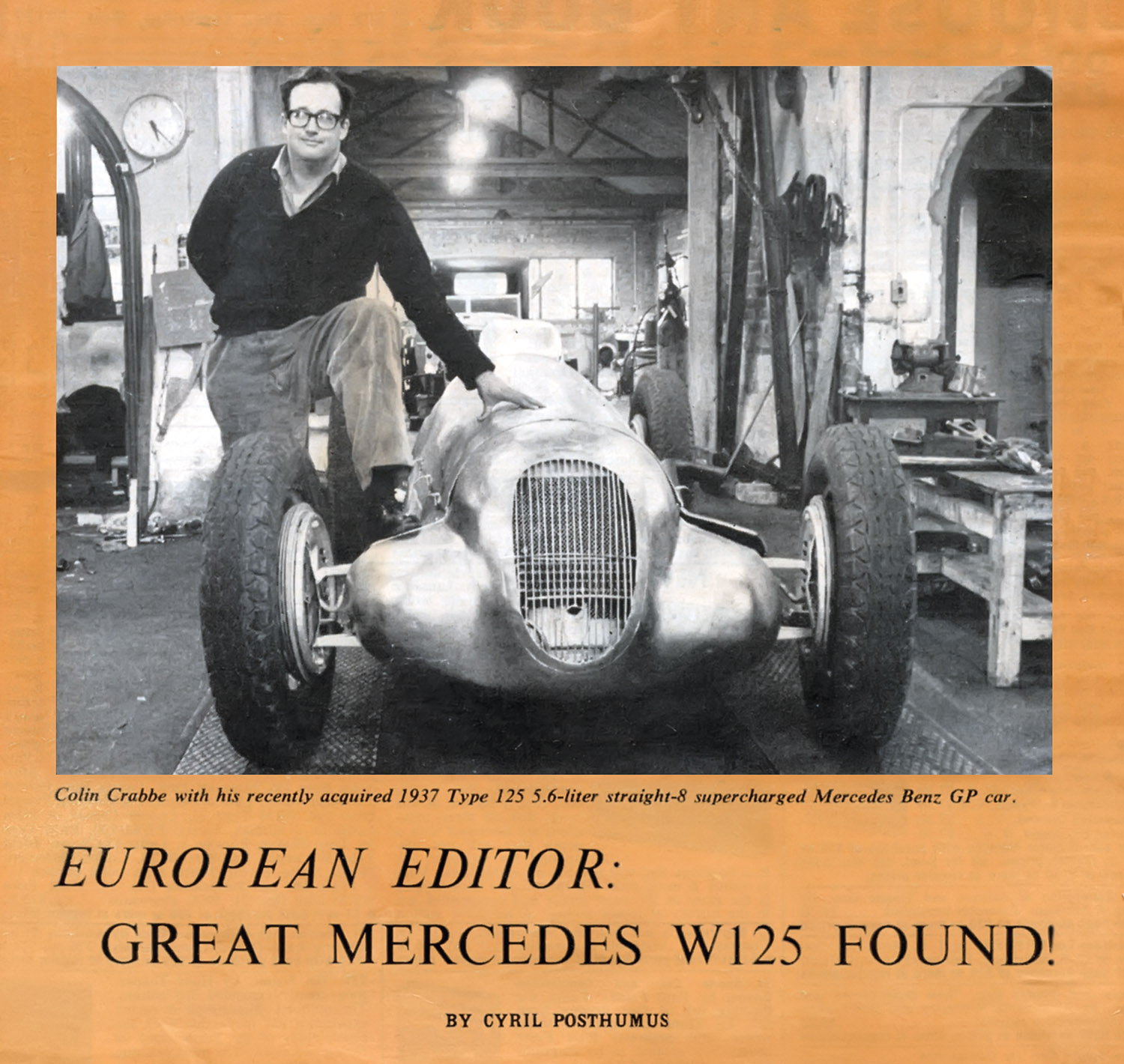
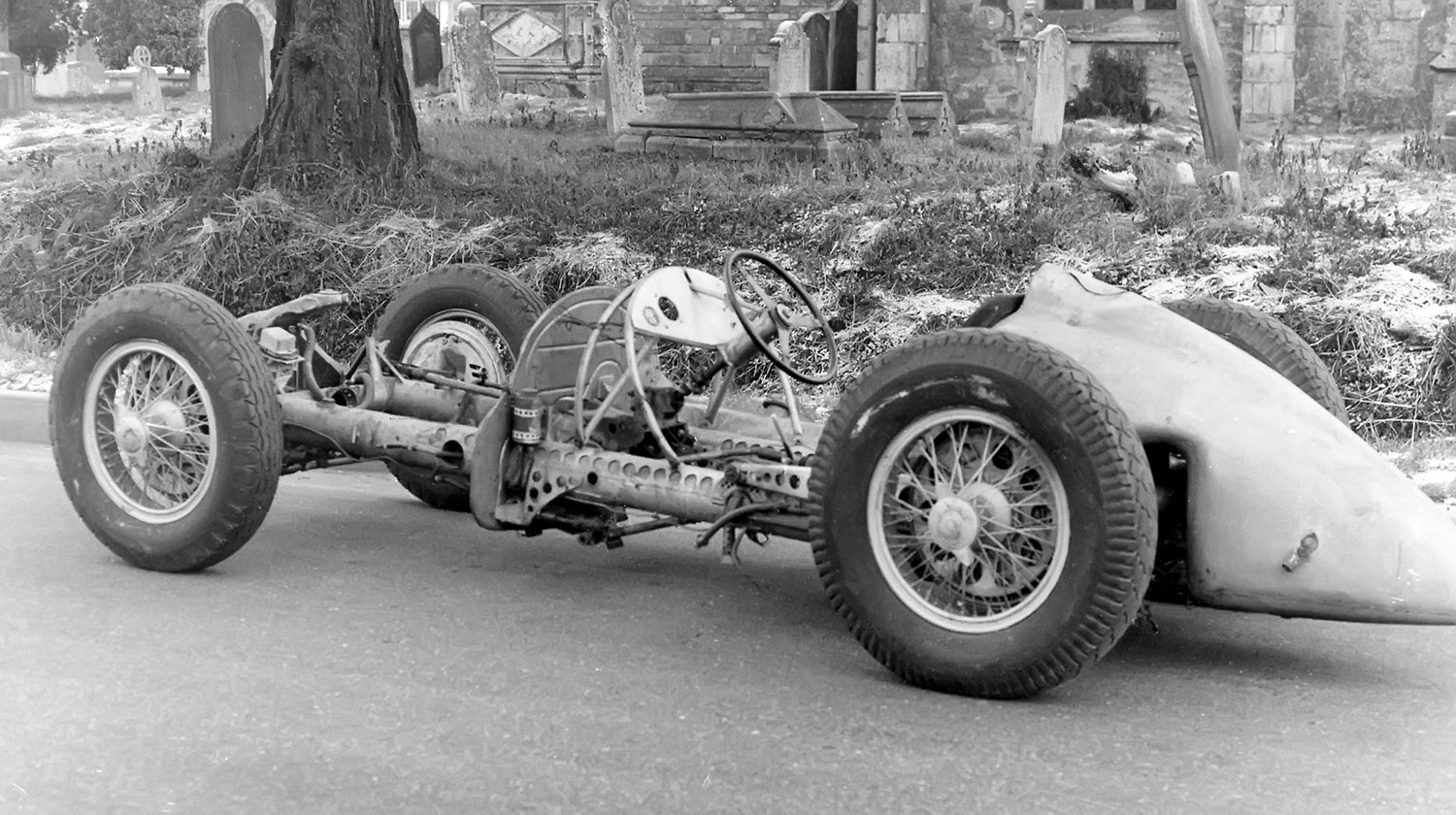
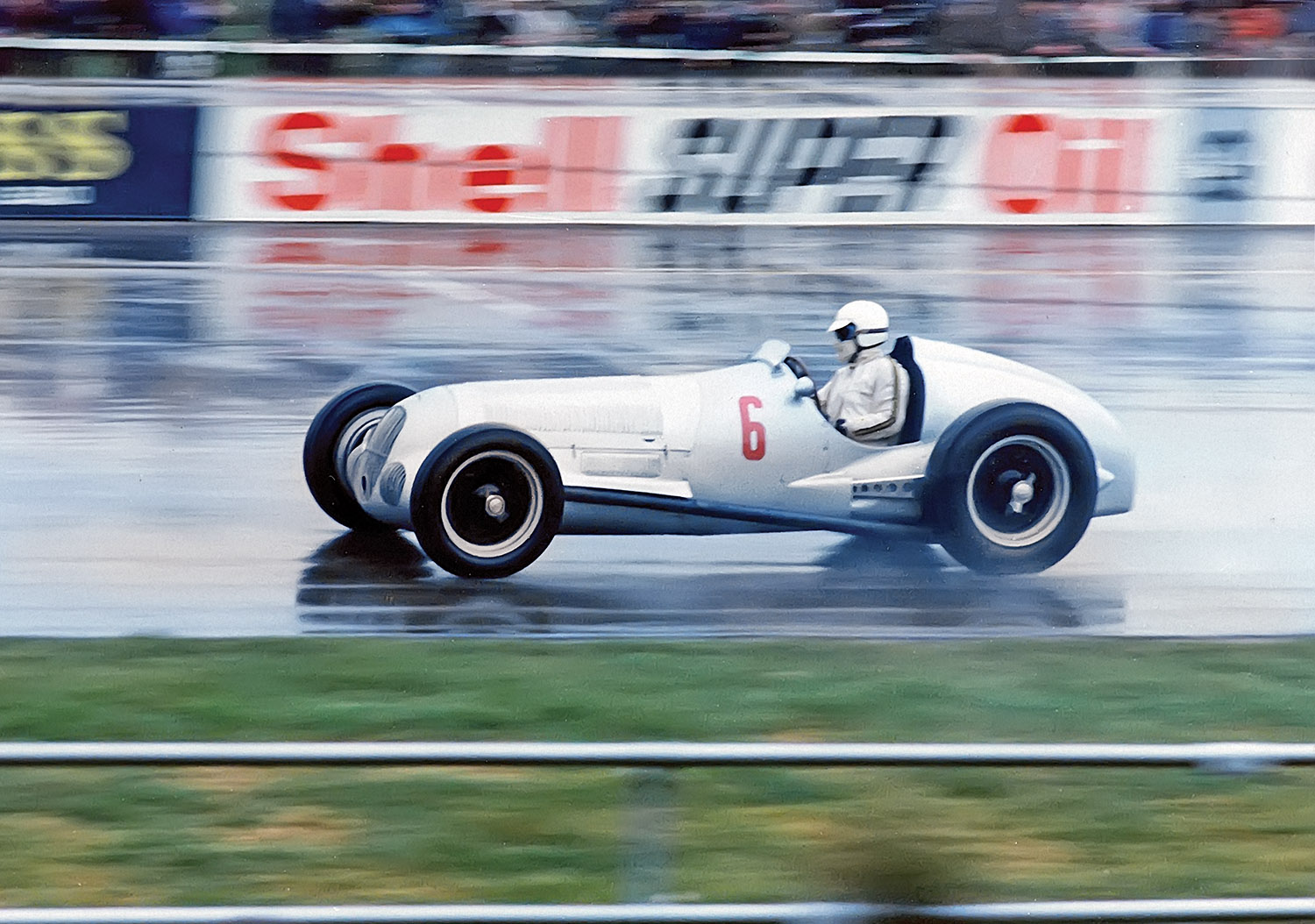
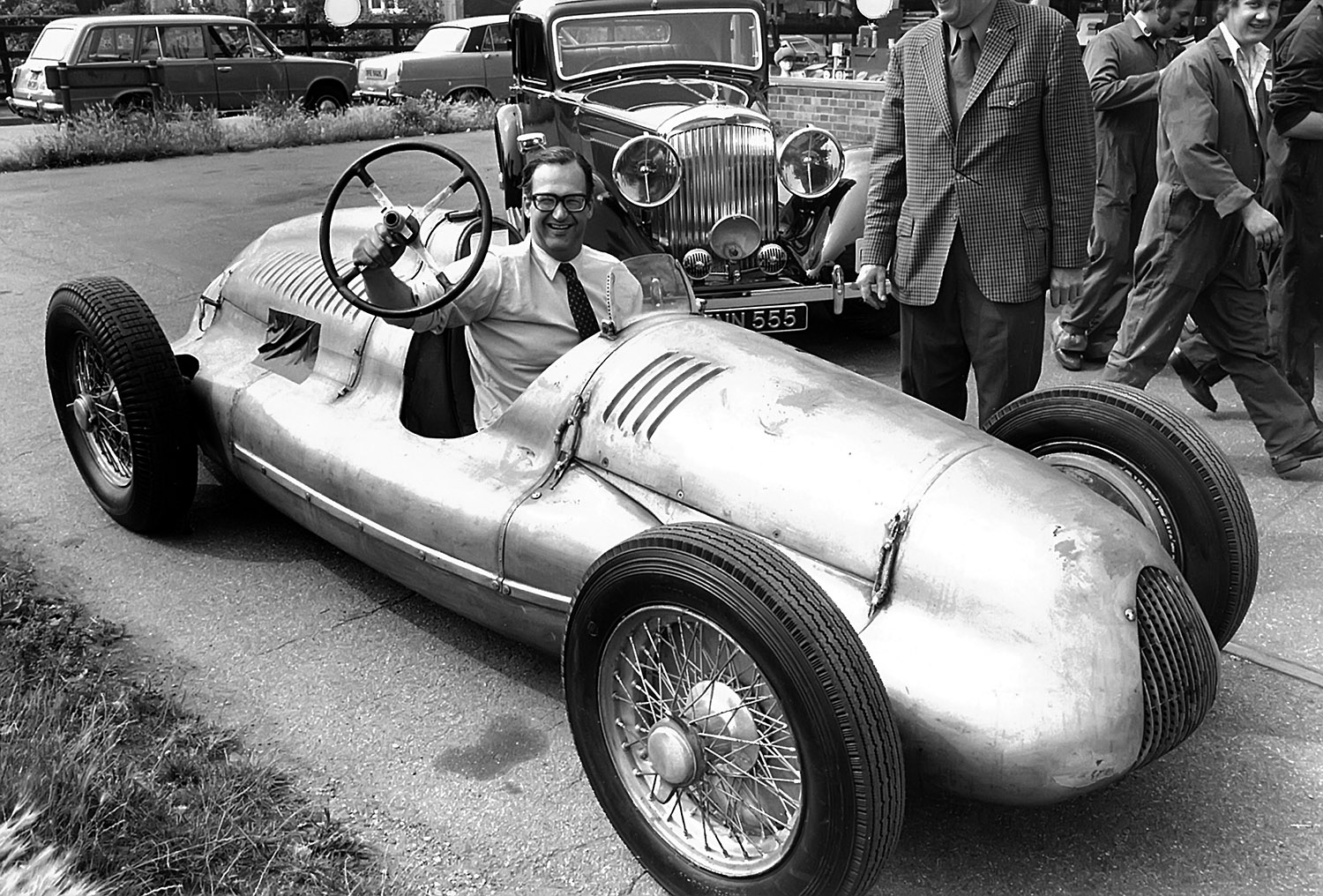
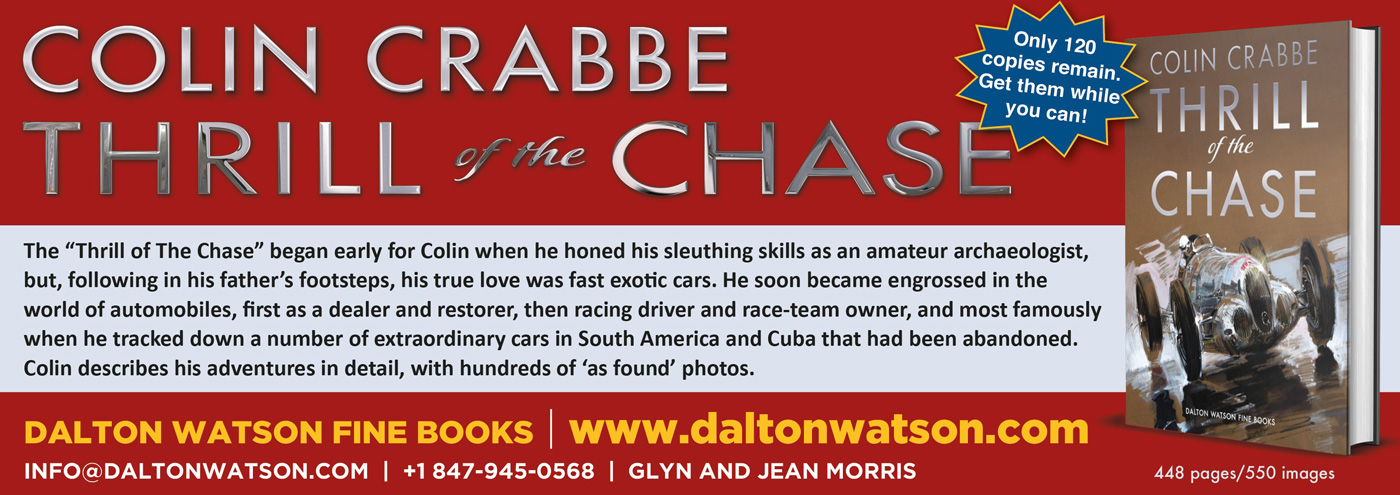
Fascinating reading. I feel as if I were there celebrating with Colin.